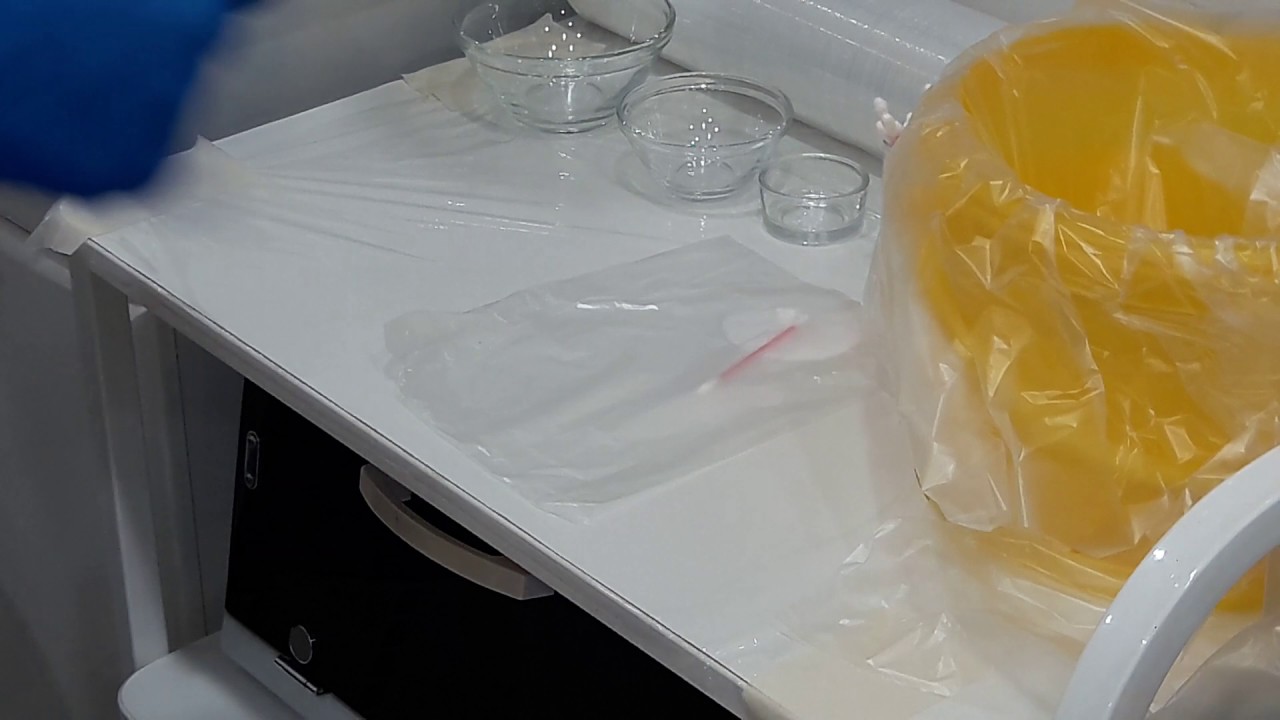Asepsis: safety measures in permanent makeup
5 safety rules for a permanent makeup artist

Asepsis is a series of measures aimed at preventing the penetration of pathogens into damaged tissues. Since PM is an invasive procedure, certain rules must be carefully followed.
Since permanent makeup is an invasive procedure, it is necessary to carefully follow the rules that ensure the safety of the health of the client and the master himself. This material is devoted to such an important issue as asepsis - an exclusive translation of an article published on the website of the international journal for micropigmentation specialists PMU International. Magazine of Permanent Makeup (original article - link )
Asepsis is a series of measures aimed at preventing the penetration of pathogens into damaged tissues. These measures include:
- sterilization of used instruments;
- storage and disposal of consumables;
- special treatment of the client's skin;
- observance by the master of certain rules before, after and during tattooing;
- regular sanitary and hygienic measures in the treatment room.

Sterilization of used instruments
Permanent makeup devices that do not have a hygiene module do not exclude the ingress of pigment and blood into a non-replaceable pen. To avoid transmission of infection from one person to another, the handpiece of the disinfection device should be exposed to an ultrasonic bath with a special solution. Otherwise, when installing a new needle, its sterility will be violated.
Advanced devices, supplemented with a hygiene module, do not allow pigment and blood to enter the handle and therefore do not need ultrasonic disinfection. After each procedure, it is enough to treat the instrument with an antiseptic and cover with a disposable protective membrane.
Storage and disposal of consumables
Needles, nozzles / caps, new hygiene modules are opened in the presence of the customer immediately before starting work. They must remain sterile throughout the procedure, for which the handle is hung in between (if the design of the device allows it) or placed in the same position on a sterile gauze pad.
Cotton swabs and discs before the procedure should be processed in an autoclave or hot air sterilization cabinet, after these manipulations they should be placed in a sterile closed container.
At the end of the procedure, reusable containers are stored in a disinfectant solution, then rinsed with running water and processed in an autoclave, hot air sterilization cabinet or chemical solution.
Used disposable consumables (needles, caps, gloves, covering material, cotton swabs and discs) are another matter entirely. For example, in Russia they should be disinfected, then placed in a sealed package and disposed of in accordance with the procedure established for hazardous waste of the 2nd hazard class, with sanitary rules and SanPiN provisions.
Client skin treatment
Before a session of permanent makeup, the affected area should be treated with an antiseptic solution in accordance with the instructions for its use. At the beginning of work, preference should be given to an antiseptic, which also degreases the skin.
During the PM session, only sterile consumables (needles, cotton swabs or chopsticks) should be touched to the client's skin, gloves should always be on the hands. Removal of pigment residues in the affected area is carried out using an antiseptic soap solution intended for damaged skin or mucous membranes. Post-procedural care products are applied with a sterile cotton swab.
Compliance with certain rules by the master before and during tattooing
Having met with the client, the PM master must check whether this client took off his outer clothing in a separate room, whether he put on shoe covers or individual slippers and whether he covered his head with a disposable cap.
The specialist himself must have a neat appearance and be dressed in a special uniform - a hood, a clean medical suit or gown, and replaceable shoes. The length of the sleeves should allow you to raise your arms to the middle of the forearm. Work should be carried out in disposable gloves and a medical bandage on the face. If gloves are slightly contaminated with biological material (blood, ichor, etc.) or pigment, treatment with an antiseptic solution is acceptable. In case of severe contamination, gloves must be changed.
Carrying out regular sanitary and hygienic measures in the treatment room
Coatings used in furniture finishing should be designed for wet cleaning with disinfectants. For walls, ceramic tiles are the best option, for floors - tiles or linoleum.
After each client, the workplace should be cleaned with the replacement of the covering material - a film that should cover the surface of the desktop, apparatus, lamps, etc. A disposable sheet for the sofa and a napkin under the head are required.
At the end of the working day, all work surfaces are wet cleaned with the addition of disinfectant solutions.
General cleaning should be carried out at least once a week, including the treatment of all surfaces.
An indispensable means of maintaining sterility is an ultraviolet irradiator. The frequency and duration of its operation depends on the characteristics of the device and the size of the room. In addition, the room must be actively ventilated.
Also, in permanent makeup studios, the presence of plants, curtains, upholstered furniture and other household items that are difficult to treat with antibacterial treatment is undesirable.
Compliance with asepsis measures is a prerequisite for the permanent makeup procedure. Neglecting at least one of them is fraught with irreversible consequences for the health of both the client and the master.
